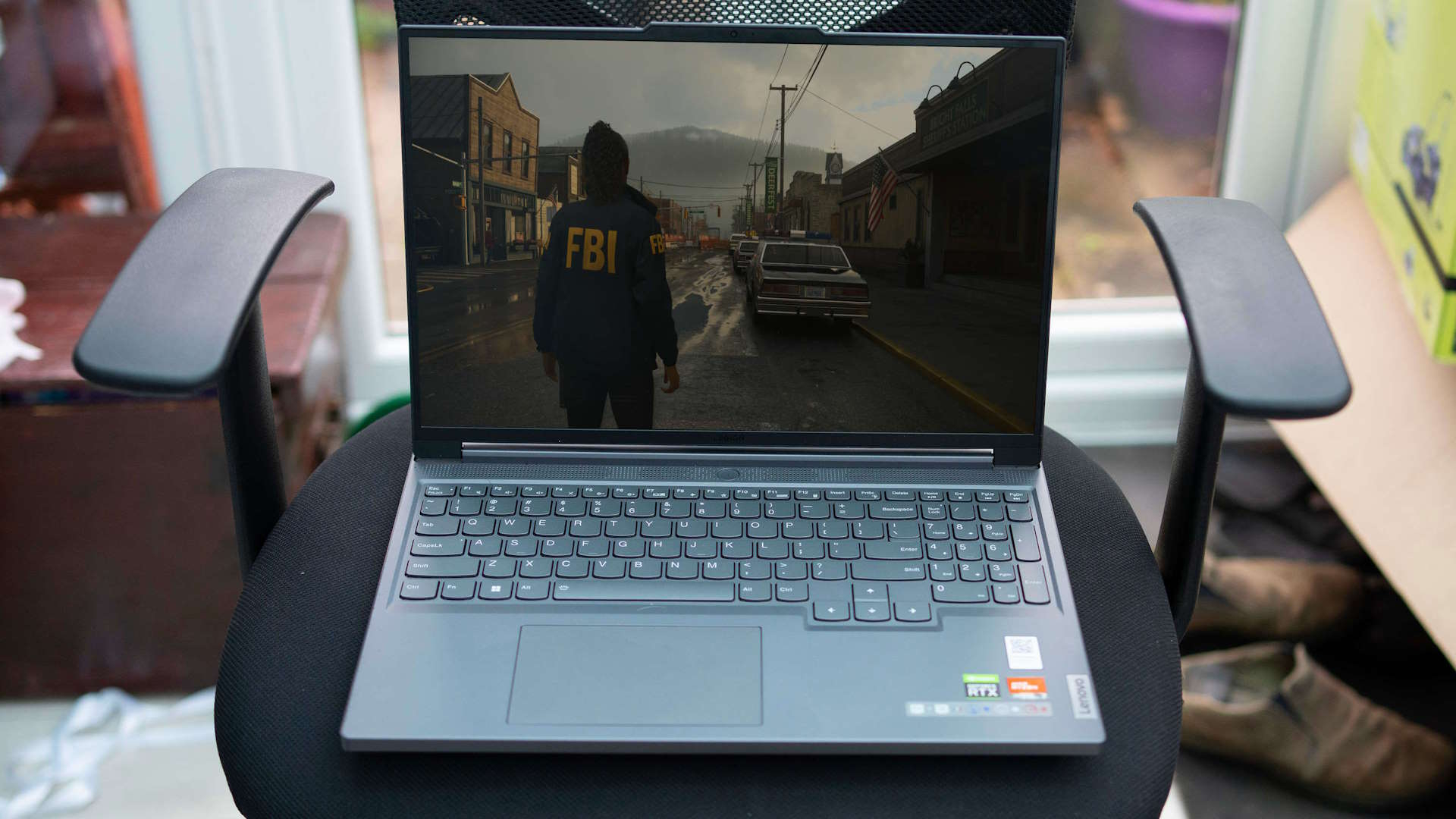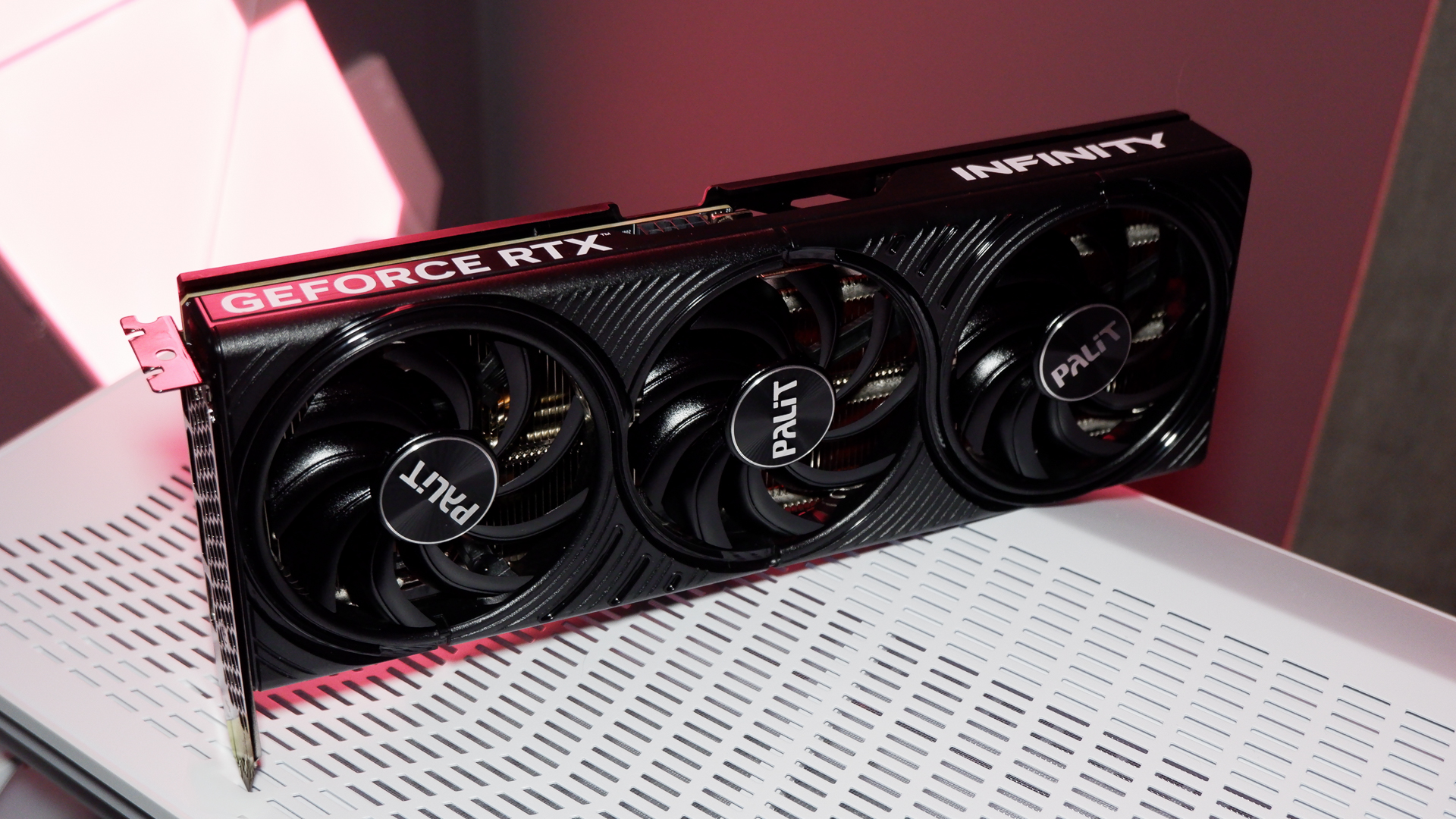Our Verdict
A fantastic balance of price and performance marred only by a low endurance when gaming on battery power.
For
- Good balance of price and performance
- Trackpad feels good
- Not too much RGB
Against
- Short gaming battery life
- 512GB SSDs are getting a little small
PC Gamer's got your back
Slim, eh? I'm not into the body shaming of portable gaming systems, but if the Lenovo Legion Chunky is ever released, it's going to need a larger reviewer. Basically, I'm not convinced that it's slight enough to justify that 'Slim' moniker.
Still, there are benefits to having something this substantial on your lap. The keyboard doesn't feel squeezed, and there's even a numpad. The trackpad can be a decent size, and a 16-inch laptop screen can feel luxurious when you're using it two feet from the end of your nose. Plus there's extra room for the cooling system and, in theory, battery. Well, we'll see about that one.
The price/potency equation for the Lenovo Legion Slim 5 sees AMD and Nvidia brought together for a combo that's capable of good frame rates for a welcome price. Though I'm beginning to question the utility of 512GB SSDs on gaming laptops in an age where even a popular top-down CRPG can take up 136GB and Ark: Survival Evolved can double that. You're unlikely to buy a laptop like the Slim 5 just to play Stardew Valley, so a bit more space would be appreciated. And, given the low price of SSD storage right now, it ought to be expected.
However, should you wish to offload your Steam library to an external drive, you at least have options. A pair of USB-C ports lives on the left-hand side of the chassis, both USB 3.2 Gen 2 with DisplayPort, and while one can supply 140W of power for charging devices, you can't use them to charge the laptop itself. On the rear of the machine there's another two USB ports, USB 3.2 Gen 2 Type-A, along with a dedicated charging port, Ethernet, and HDMI 2.1. There's also an SD Card slot and a headset combo jack, making this a laptop with excellent connectivity.
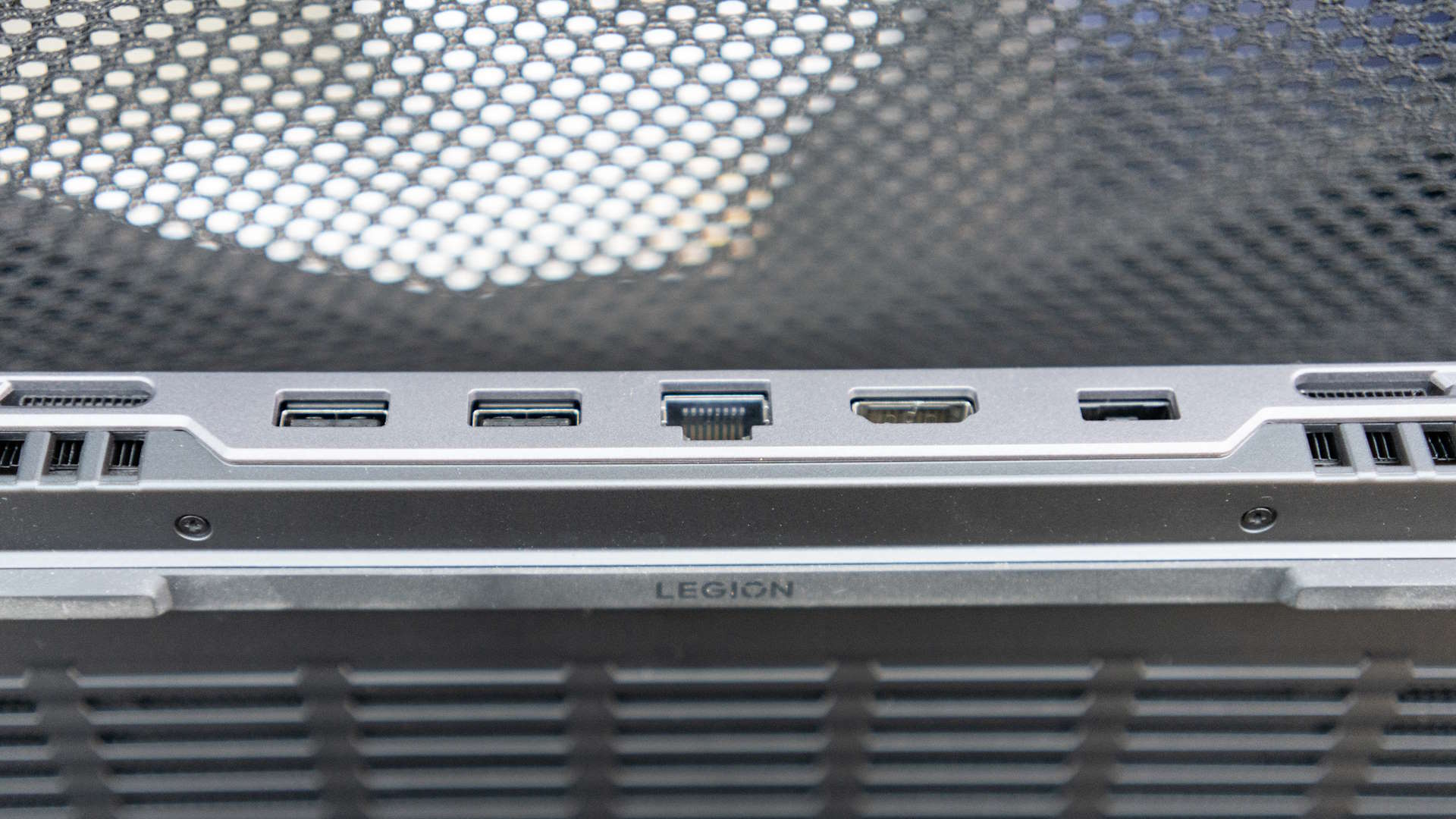
CPU: AMD Ryzen 7 7840HS
GPU: Nvidia GeForce RTX 4060
RAM: 16GB DDR5-5600
Storage: 512GB SSD
Screen: 16in IPS, 2560x1600px, 165Hz
Connectivity: Wi-Fi 6E, Bluetooth 5.1, 2x USB 3.2 Gen 2 Type-A, Ethernet, HDMI 2.1, SD Card reader, 2x USB 3.2 Gen 2 Type-C/Displayport, headset combo jack, charging port
Dimensions: 36 x 26 x 20cm
Weight: 2.3kg
Price: $1,341 | £1,150
The positioning of many of the ports on the rear rather than the side of the chassis is an interesting choice. While it's perfectly possible to use a USB-C dock to attach a monitor and some peripherals through a single cable—though you'll still need to use the charging port—having power, USB, HDMI and Ethernet on the back of the laptop suggests a more sedentary life in which the Legion spends much of its time desk-bound, the cables tidied out of the way instead of spraying out from the side.
The AMD Ryzen 7 7840HS CPU at its heart is an eight-core chip with 16 threads, a base clock of 3.8GHz and a turbo of 5.1GHz. It's a Zen 4 chip made on the TMSC 4nm process, and pulls up to 54W of power. Backed up with 16GB of DDR5-5600MHz RAM, and that 512GB PCIe 4 SSD, it makes for a well-specced machine even before you get to the RTX 4060. This is obviously not the greatest graphics card on the market, but Nvidia's xx60 cards are popular mid-range gaming chips and have a good reputation for performance at a decent price. It's certainly enough to push the 1600p 16:10 IPS screen and with the added benefit of DLSS and Frame Generation in play for pushing the frames higher.
In our benchmarks it performs about as well as you'd expect, frequently hitting 60 fps or more in games at ultra quality and 1080p resolution. The RTX 3060 was the second most popular GPU in the 2023 Steam hardware survey, coming in behind the GTX 1650, so the RTX 4060 should have a few years of life in it yet and has the benefit of bringing DLSS 3's full feature set to help bump frames up to the screen's 1600p native res.
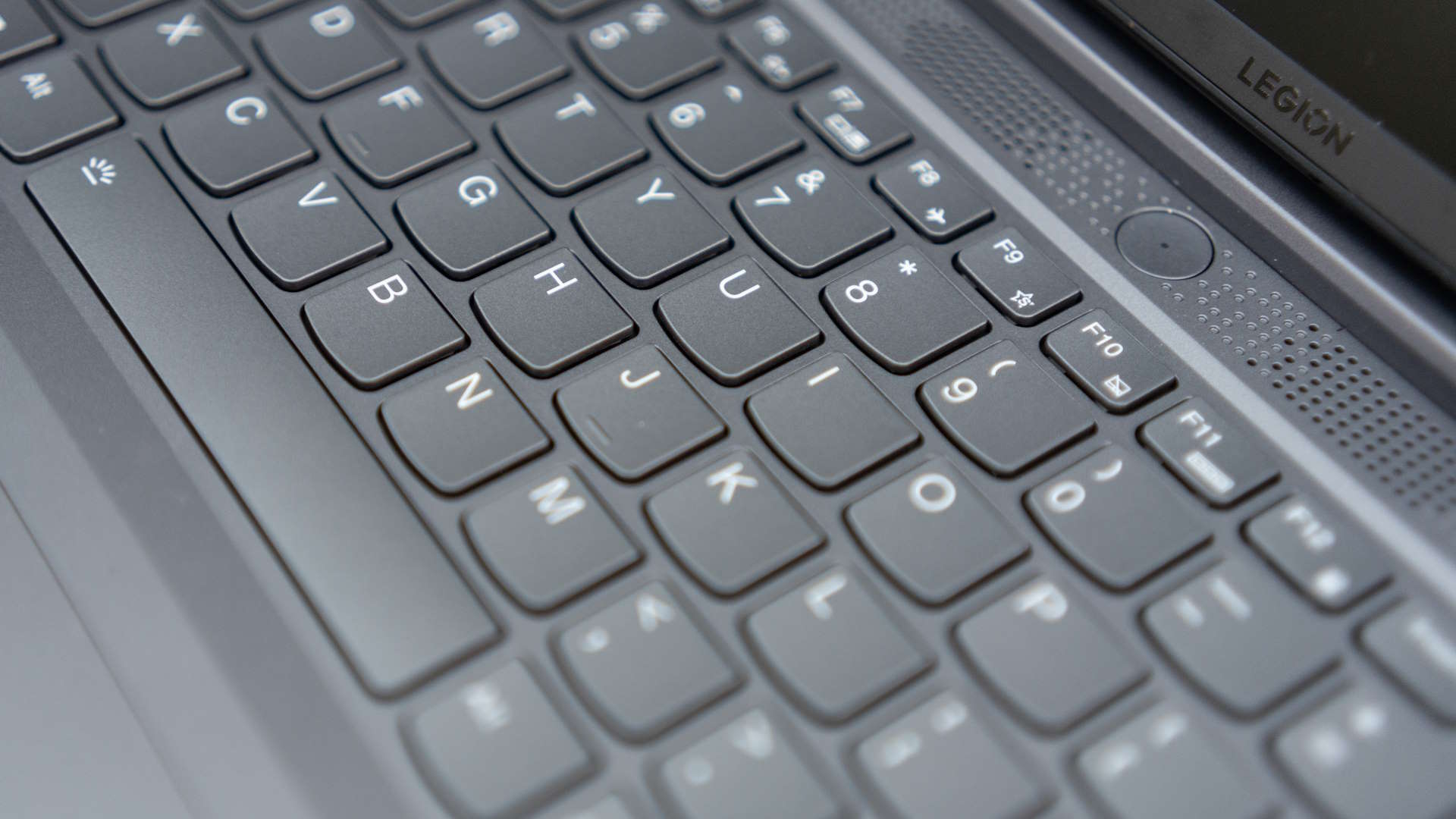

That screen is an IPS model, and while it doesn't provide the saturated colours of an OLED it also doesn't have that tech's reflectivity problem either, so even with lights behind you it's possible to see what you're doing instead of your own face. There are brighter screens out there, however, and it struggles a bit in dark areas of games and videos; its backlight making itself known a little more than I'd like.
Unless you're using a Bluetooth controller the keyboard is the main interface between you and the PC, and the Legion Slim has an excellent one. There's a good amount of key travel, the backlighting can be adjusted so it highlights the letters without causing migraines, and due to the size of the laptop you get full-size keys. I'm not keen on the current trend to make the Enter key smaller to fit in some extra punctuation above it, I just don't use the back-facing slash or pipe characters enough to justify them having their own key, especially one I often hit by mistake when attempting to send zingers on a chat app.
The numpad is a cut-down model: it's nice that it's there, but if it had been cut there might have been room for more speakers than the pair of tiny grilles between the keyboard and screen hinge. The trackpad underneath is particularly nice to use. It has a grippier surface than the glass pads that can sometimes allow your fingers to slide over them like a racoon in ice skates. There's also a backlight that can be cycled through a few modes using the Fn key and space bar, or controlled more precisely using the Lenovo Vantage software, which also allows you to activate a variable refresh rate and add a few hundred megahertz to the GPU and VRAM clocks at the cost of a warning message about the warranty.
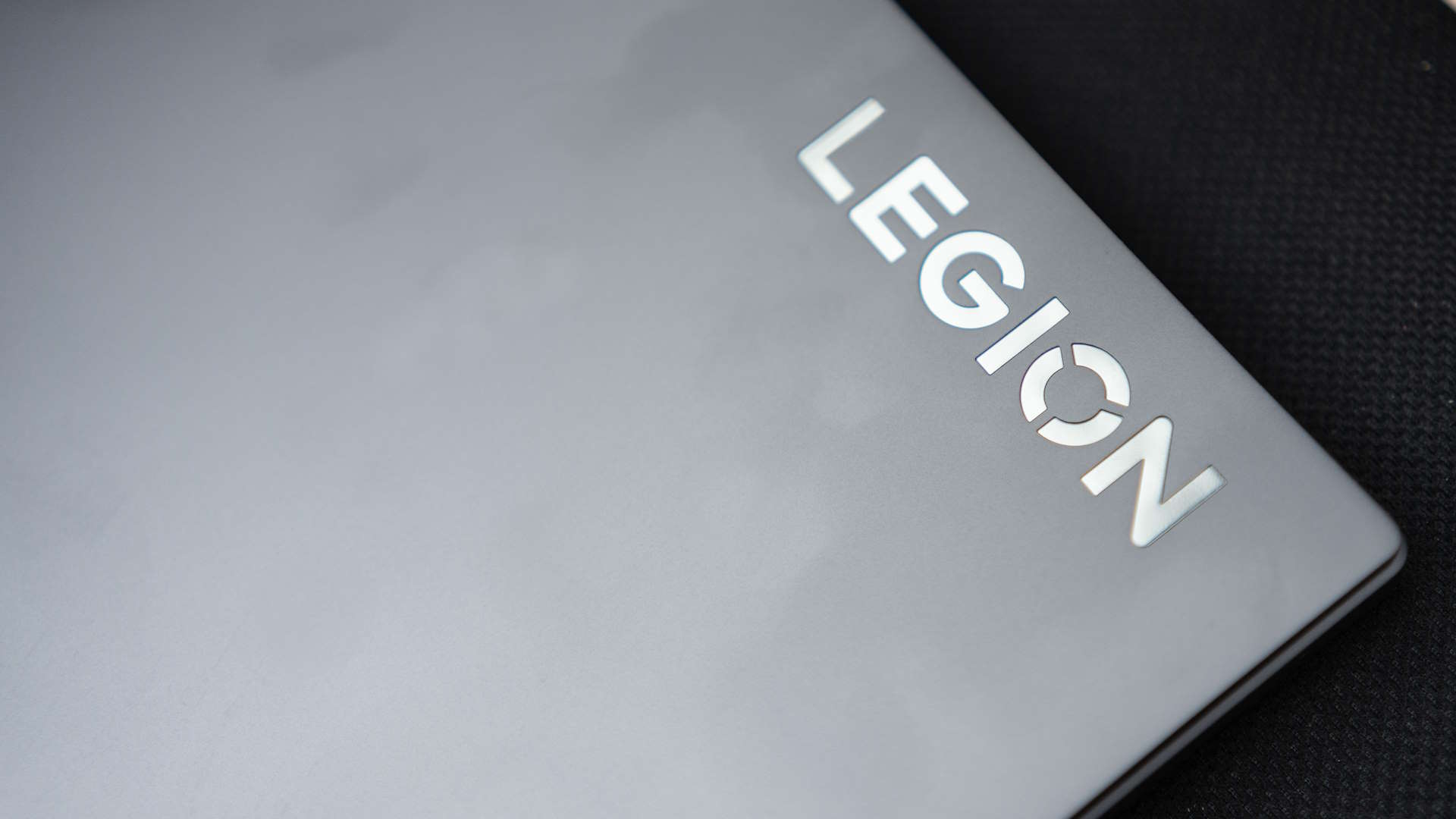
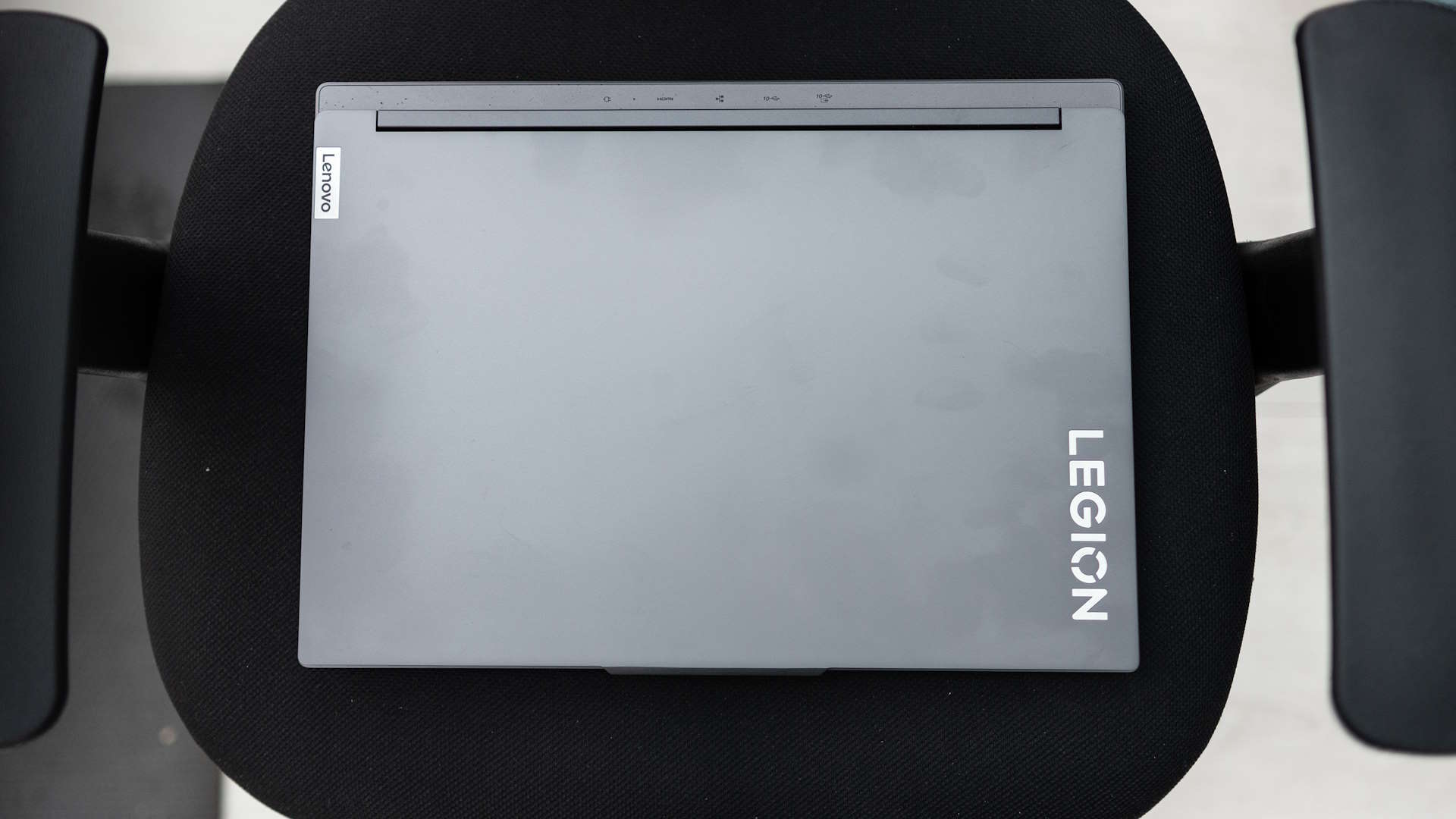
✅ You're after an excellent all-rounder: The Legion Slim 5 can tackle both games and productivity tasks with equal aplomb.
✅ You like a good keeb: The Lenovo Legion keyboards really do deliver in a way most gaming laptop keebs rarely do.
❌ You want freedom to roam: You're not going to be able to stray too far away from a power socket and still play games.
❌ You want something actually slim: The name might be overselling it a little, though the Legion Slim is more slight than its bigger siblings it's still relatively chonk.
There's a downside to all this, of course. In our testing under gaming conditions, the laptop's battery gave up after one single hour. You can get much more out of it if you're just messing around with a web browser (or playing Stardew Valley), with as much as six hours predicted by the Lenovo battery widget. It's when you fire up the GPU and start throwing polygons around that the endurance begins to drop, however, giving you just enough time for a dash between wall sockets—and you'll need to carry the charger with you as it's picky about what it'll take power from. No using a handy USB-C tablet charger for a quick top-up with this one.
So while this does appear to be a new star among reasonably priced gaming laptops, it comes with a caveat. Of course there was going to be a compromise when you're getting something with this level of performance for less than two grand, and in this case it's the lithium brick in the base that's the weak link. We don't expect enormous battery life from gaming machines, but the one hour that the current Lenovo laptops sport seems a little short.
A fantastic balance of price and performance marred only by a low endurance when gaming on battery power.

Ian Evenden has been doing this for far too long and should know better. The first issue of PC Gamer he read was probably issue 15, though it's a bit hazy, and there's nothing he doesn't know about tweaking interrupt requests for running Syndicate. He's worked for PC Format, Maximum PC, Edge, Creative Bloq, Gamesmaster, and anyone who'll have him. In his spare time he grows vegetables of prodigious size.
